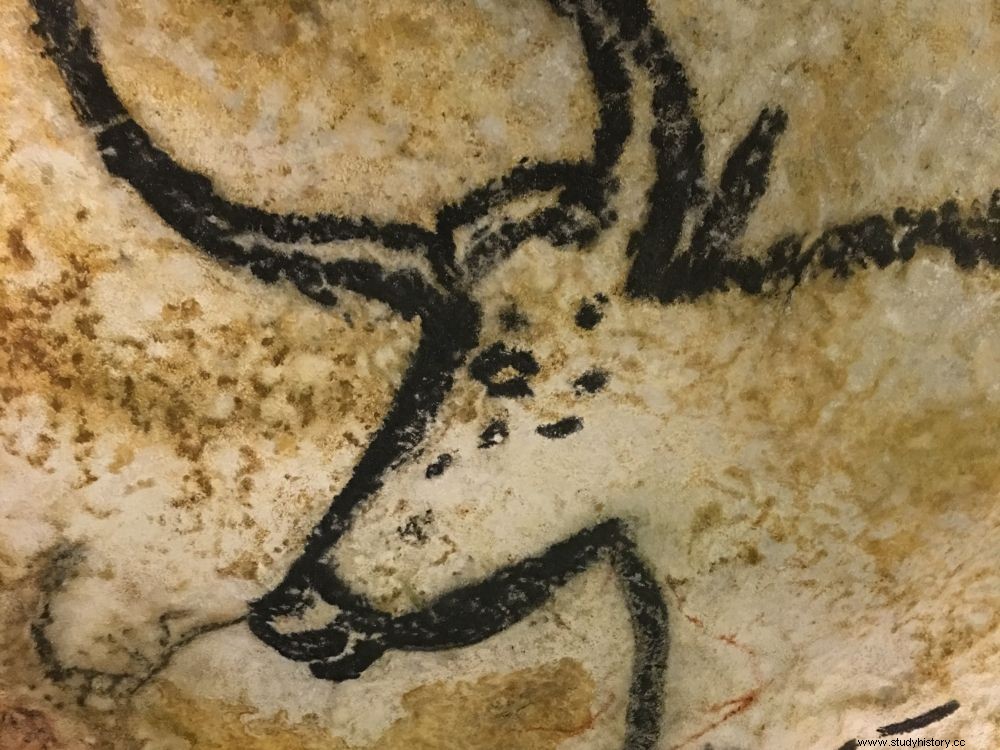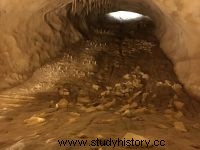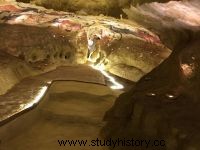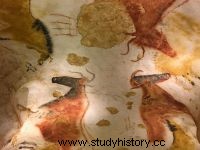The International Center for Parietal Art - Lascaux 4 - offers a superb facsimile of the famous decorated cave of Dordogne. The site which opens to the public on December 15, 2016 is inaugurated this Saturday by François Hollande; Science and the Future went there at the end of October.

One of the reproductions that visitors to Lascaux 4, in the Dordogne, will see. The site is less than a kilometer from the real cave.
In front of the bare sides of the building and the waltz of the diggers, one can indulge in doubt. Will Lascaux 4 be ready on December 15, 2016, the announced day of its opening to the public? "He will be" , net portion Germinal Peiro, President of the Departmental Council of the Dordogne. Today is October 24th and Sciences et Avenir is on the construction site, where the city councilor welcomes the Norwegian ambassador to France and his compatriot, the architect Kjetil Thorsen, from the Snohetta firm. Around them, journalists, and a swarm of workers who work non-stop so as not to make the heralds of the International Center of Parietal Art lie. What will Lascaux 4 be? First an extraordinary facsimile, which is well and truly finished, showing, on a real scale, what is the famous Dordogne cave, discovered on September 12, 1940 by 4 teenagers (they were looking for their dog "robot"!). 20,000 years ago, Cro-Magnon men painted horses, cattle or rhinos on the walls of this cave. An incredible bestiary, with 615 animals, drawings 4 to 5 times older than the Cheops pyramid! These works, of incredible precision and beauty, are no longer directly visible in the original site, which has been closed to the public since 1963. Hence the interest in such a reproduction. "It's a site that gives perspective" , sums up the architect nicely (see the video below). "It lets us know where we come from" . In the opinion of its designers, the International Center for Parietal Art aims to become a reference site in the world.
The Lascaux 4 building is half-buried. "It is like an opening cut in the hill by a knife, the edges of which have been pushed aside to establish the site there" explains Kjetil Thorsen. The rear of the Center will eventually have to disappear into the relief and into the forest, while the transparent front facade opens onto the valley. If the facsimile is the highlight of the visit (see below a presentation with the archaeologist Jean-Pierre Chadelle) - and the reason why the public should come here in large numbers - other animations are planned in the site . Including a "workshop" where fragments of the facsimile are reproduced, as in 3D zooms, to explain the paintings. "The total route of the visit is estimated at just over 2 hours" , says Germinal Peiro.
The facsimile was made a few miles away in the town of Montignac. For 3 years, about twenty artists from the facsimiles workshop of Périgord (AFSP) worked on the project. The reproductions, which Sciences et Avenir has been able to admire, are of astounding precision. "It's such a meticulous task that one of the painters told me recently that she had the impression of working 'with a bristle brush'" laughs Jean-Pierre Chadelle. The slideshow presented below shows the different stages of this achievement.
For the anniversary of Lascaux, a visit to the International Center for Parietal Art



